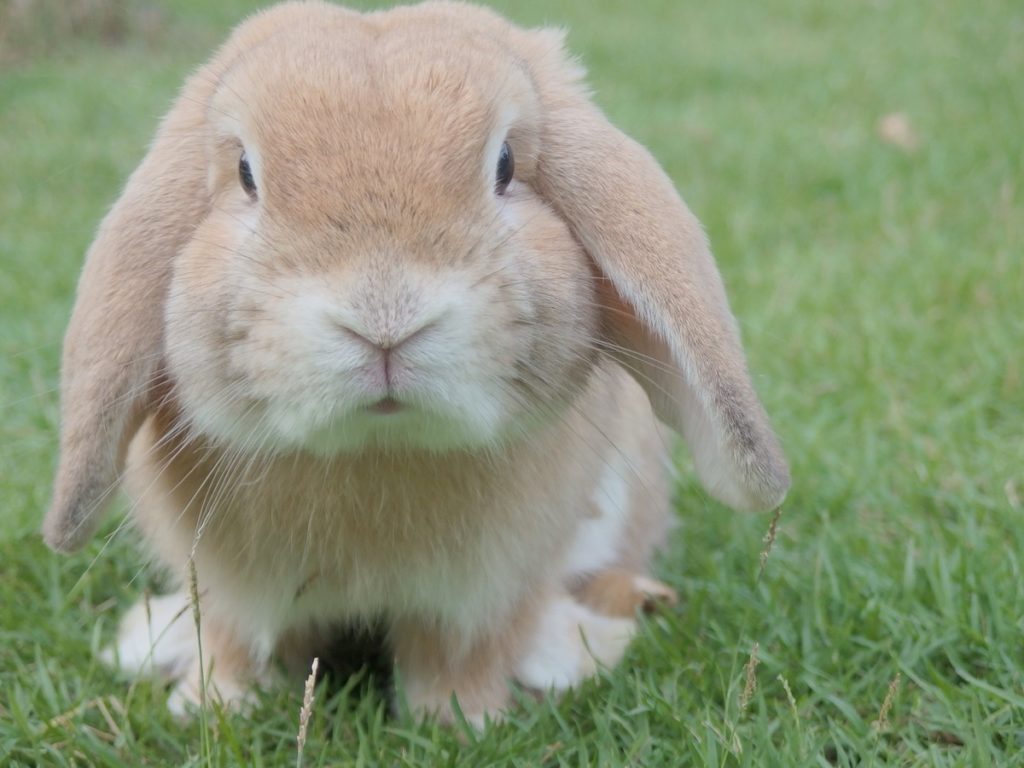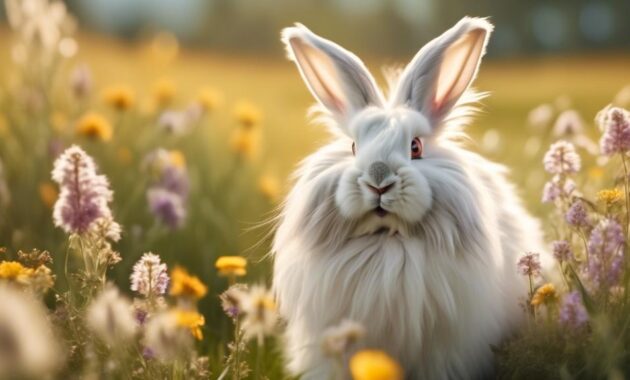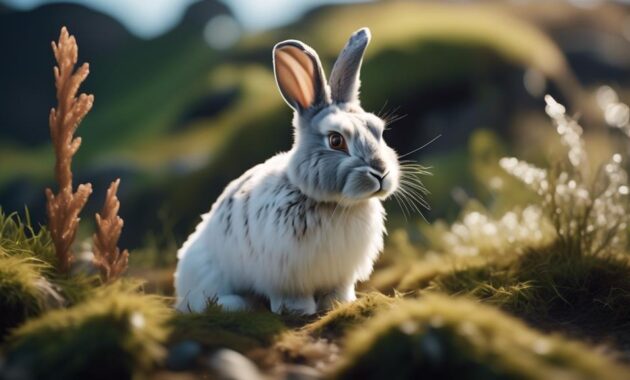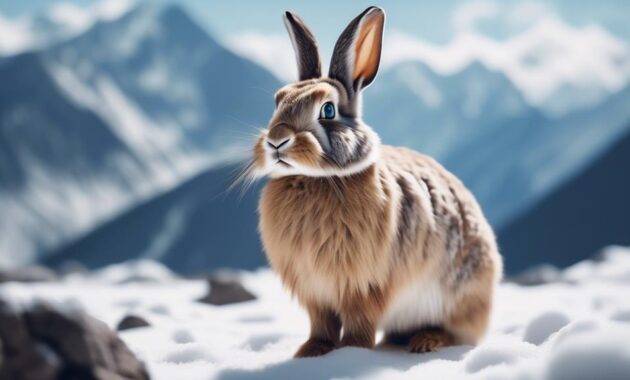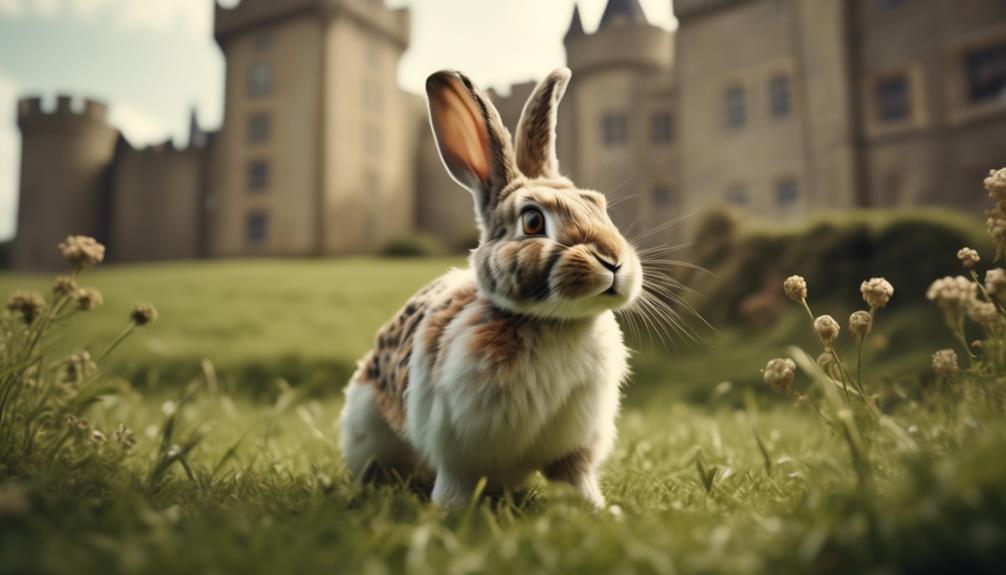
Have you ever wondered if there is more to the history of English Spot rabbits than meets the eye?
Well, prepare to be intrigued as we unravel the captivating tale of one of the oldest rabbit breeds.
From their origins in the mid-19th century to their unexpected rise to prominence, the journey of these rabbits is filled with surprises and secrets waiting to be uncovered.
So, sit back and get ready to uncover the fascinating history of English Spot rabbits, as we unlock the mysteries behind their development and their significant role in the world of rabbit breeding.
Key Takeaways
- English Spot rabbits are one of the oldest rabbit breeds, dating back to the mid-19th century.
- They were developed for show purposes, which was uncommon at a time when rabbits were primarily bred for meat.
- Breeders focused on refining distinct coat patterns and markings, as well as developing a full arch body shape for an elegant posture.
- The emphasis on aesthetics in English Spot rabbit breeding marked a turning point in rabbit breeding history, contributing to the diverse world of rabbit breeds today.
Oldest Rabbit Breed With Rich Origins
The English Spot rabbit holds the distinction of being one of the oldest rabbit breeds, dating back to the mid-19th century. With rich origins, this breed was developed for show purposes and was uncommon at the time, as rabbits were mainly used for meat.
However, the English Spot's unique coat patterns and markings quickly caught the attention of breeders and enthusiasts. The breed's history suggests its significance in the development of other rabbit breeds as well.
Its distinct appearance and charming personality make it a popular choice for rabbit lovers today. If you're looking for a rabbit with a rich history and a touch of elegance, the English Spot is the breed for you.
Development for Show Purposes
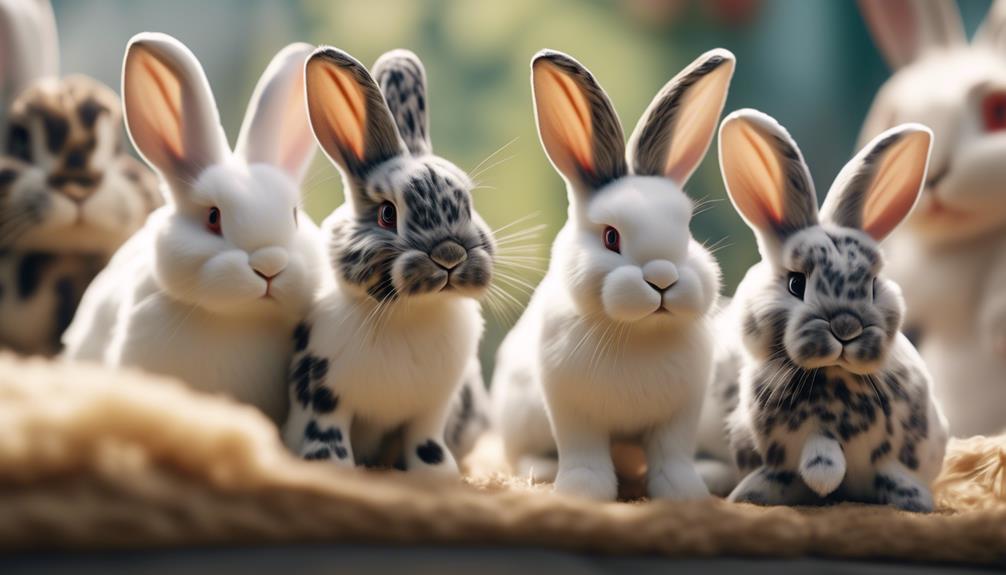
With its unique coat patterns and markings catching the attention of breeders and enthusiasts, the English Spot rabbit quickly became a breed developed specifically for show purposes. The breeders saw the potential in showcasing the rabbit's striking appearance and began selectively breeding for specific traits that would enhance its showmanship.
Here are three key points to consider about the development of the English Spot for show purposes:
- Coat Patterns: Breeders focused on refining the distinct coat patterns and markings of the English Spot, aiming for consistency and clarity in the spots and stripes.
- Body Shape: The breeders also worked on developing a full arch body shape, which gives the English Spot a distinctive and elegant posture, enhancing its presence in the show ring.
- Size: The English Spot was bred to be a medium-sized rabbit, ensuring that it isn't too small to be overlooked nor too large to be cumbersome. This size makes it easier for judges to assess its overall balance and proportion during competitions.
Through careful breeding and selection, the English Spot evolved into a breed that truly shines in show rings around the world.
Uncommon Role in Rabbit History
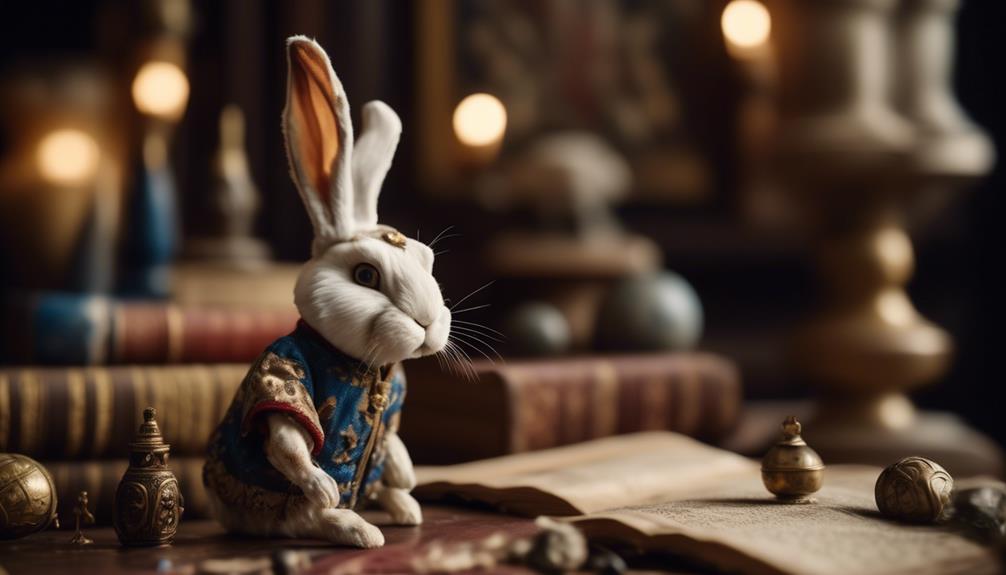
Interestingly enough, English Spot rabbits have played an uncommon role in the history of rabbits. While rabbits were primarily bred for meat during the mid-19th century, the English Spot rabbits stood out as they were developed for show purposes. This was a significant departure from the norm at that time.
Instead of focusing solely on their meat production, breeders dedicated their efforts to enhancing the aesthetic qualities of English Spot rabbits. This decision to prioritize their appearance and showcase them in shows marked a turning point in the history of rabbit breeding. English Spot rabbits became known for their distinctive coat patterns and were recognized as a separate breed.
Their role in shifting the focus from utility to aesthetics has contributed to the diverse and vibrant world of rabbit breeds that we see today.
Significance in Breed's Evolution
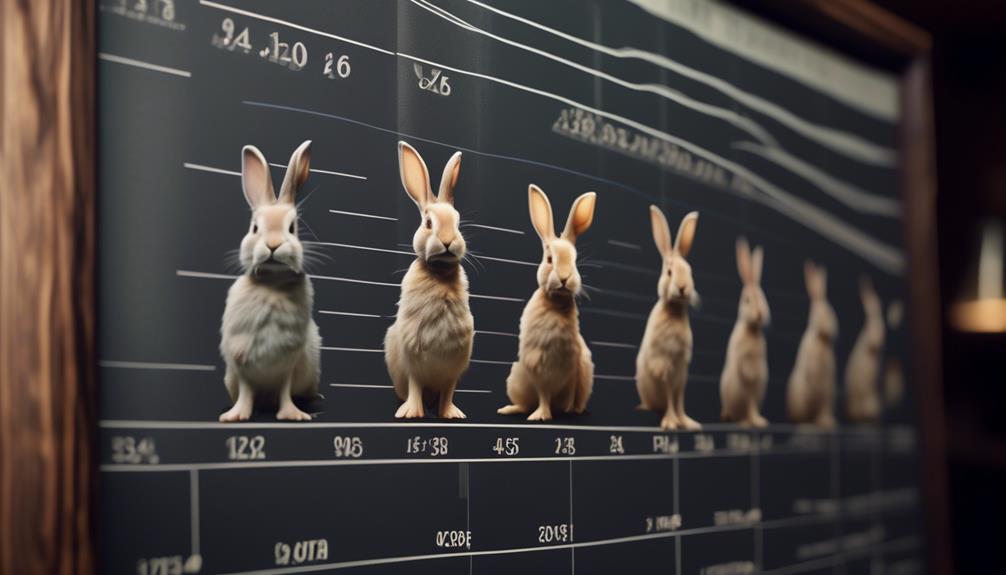
As we explore the significance of English Spot rabbits in the breed's evolution, it becomes clear that their departure from traditional meat production and focus on aesthetic qualities marked a pivotal moment in rabbit breeding history.
The English Spot's transition towards becoming a show rabbit, rather than a source of meat, allowed breeders to focus on refining its distinct markings and patterns. This shift in breeding priorities not only led to the development of a visually stunning breed, but also paved the way for future advancements in rabbit breeding techniques.
The English Spot's influence on the breed's evolution can be seen in the increased emphasis on appearance and the creation of breed standards that continue to shape the rabbit fancy today.
Mid-19th Century Beginnings
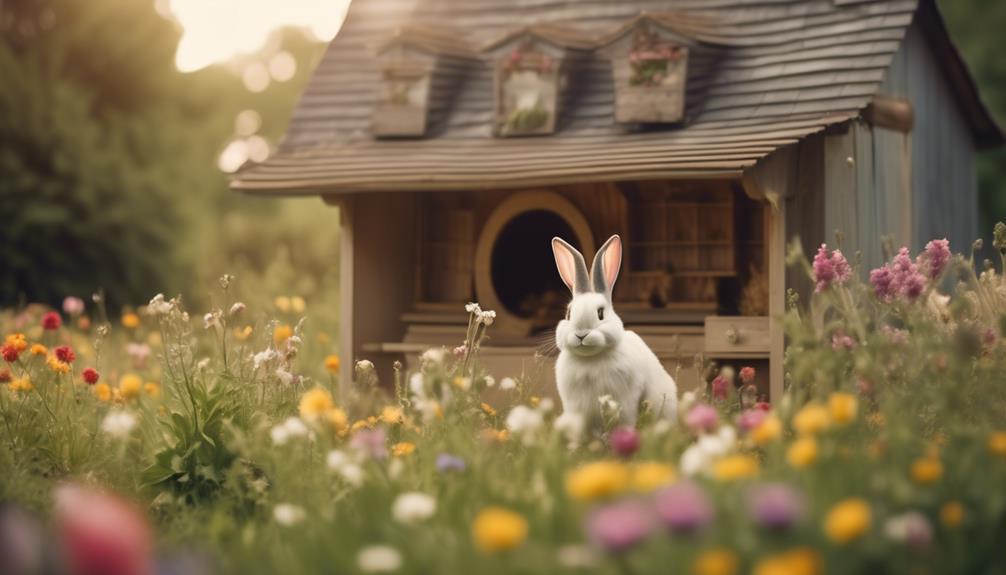
English Spot rabbits have a rich history that dates back to the mid-19th century. During this time, rabbits were primarily bred for meat, making the development of English Spot rabbits for show purposes quite uncommon. However, despite this, the breed managed to garner significance and popularity. The mid-19th century marked the beginning of a new era for English Spot rabbits, as breeders started to focus on their unique coat patterns and markings. These rabbits quickly gained attention for their striking appearance and were soon recognized as a distinct breed. Today, English Spot rabbits continue to be admired for their beautiful spots and are cherished as both show rabbits and beloved pets.
| Mid-19th Century Beginnings | |
|---|---|
| – Breed developed for show purposes | |
| – Uncommon at the time | |
| – Gained significance and popularity |
Frequently Asked Questions
How Did the English Spot Rabbit Breed Become One of the Oldest Rabbit Breeds?
The English Spot rabbit breed became one of the oldest rabbit breeds because it dates back to the mid-19th century. It was developed for show purposes, which was uncommon at the time when rabbits were mainly used for meat.
What Were Some of the Earliest Uses of Rabbits Before They Were Developed for Show Purposes?
Before being developed for show purposes, rabbits were primarily used for meat. They were uncommon as pets and mainly raised for their meat. It wasn't until later that they began to be selectively bred for their unique characteristics.
How Did the English Spot Rabbit Breed's Rarity in the Past Contribute to Its Significance in the Breed's Evolution?
The rarity of the English Spot rabbit breed in the past contributed to its significance in the breed's evolution because it stood out among other rabbit breeds, making it more desirable and sought after.
Were There Any Specific Characteristics or Traits That the English Spot Rabbit Breed Was Initially Bred For?
The English Spot rabbit breed was initially bred for show purposes. It was developed in the mid-19th century and was uncommon at the time since rabbits were mainly used for meat.
What Other Rabbit Breeds Were Popular During the Mid-19th Century When the English Spot Breed Was First Developed?
During the mid-19th century when the English Spot breed was first developed, other popular rabbit breeds included the Checkered Giant Rabbit and the American Fuzzy Lop.
What Makes English Spot Rabbits’ History Fascinating Compared to Tan Rabbits?
The fascinating history of tan rabbits dates back to the 19th century, when breeders in England developed the English Spot rabbits. These rabbits have distinctive markings that make them stand out from other breeds, making their history truly captivating.
Conclusion
So there you have it, the fascinating history of English Spot rabbits.
From their origins in the mid-19th century to their unique physical characteristics and friendly temperament, these rabbits have truly made their mark in the world of rabbit breeding.
Despite being initially developed for show purposes, they quickly gained recognition and significance, becoming one of the oldest and most beloved rabbit breeds.
Now, armed with this knowledge, you can appreciate the rich history behind these adorable and captivating creatures.

